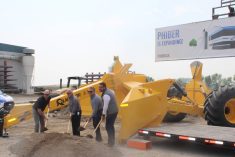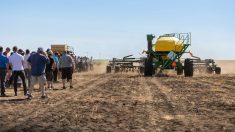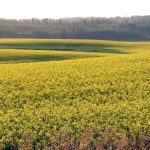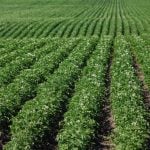In the not-too-distant past, I took pride in getting things done around the farm quickly. Everything from jumping in the grain bin without a second thought to performing feats of acrobatic wizardry in order to unclog jammed machinery (I had smaller hands). You name it, I did it.
Looking back, it’s not so much that I was a rebel without a cause, as much as I just didn’t realize that I was putting myself in harm’s way.
For producers, farming is a way of life. When you live, work and play on your farm, certain activities become second nature. You don’t even think about it, and neither does anyone else.
Read Also

A place of national honour for former deputy ag minister, Dori Gingera-Beauchemin
Long public service, focus on community and industry leadership launch Dori Gingera-Beauchemin into 2025 Canadian Agricultural Hall of Fame honourees
When I work with producers to implement written health and safety plans, one of the biggest challenges, and rewards, is helping farmers and farm workers retrain their brains to recognize hazards.
A key activity involved in developing a health and safety plan includes conducting on-farm inspections. These reviews should be conducted regularly by those most familiar with the overall operation of the farm.
Hazards are defined as anything that may cause injuries or negatively impact your health. Hazards can take many forms, including stress (lifestyle); pesticides, fertilizers, and disinfectants (chemical); repetitive strain injuries (ergonomic); gases from manure pits, dust from grain and feed, and animal-borne illnesses (biological); and machinery, livestock and extreme weather (physical).
When assessing the degree of risk, inspectors should take into consideration the likelihood or potential of the hazard to cause harm to people or property, as well as the impact of the harm. The more likely, and the more significant the impact of the hazard, the higher the risk and the more urgent the need to address it.
When assessing risk, I tell producers to ask themselves a series of questions. Under what conditions is harm likely to occur? How quickly could that unsafe condition arise? How many workers could get hurt? How badly would they be hurt? When it comes to a specific operation or task, it may be necessary to outline the degree of hazards associated with each step of a work process. Can a body part get caught in or between objects? Can the worker slip, trip or fall? Is there a danger from falling objects? Is the lighting adequate? Is contact possible with hot, toxic or caustic substances? Is the worker entering a confined space? Is this individual working alone?
Take a step back and look at your entire operation. Do you see any potential hazards? What about on your neighbour’s farm? Now do you see any hazards there? You eat, sleep and live your farm, but it’s really important to look at your farm with an outside perspective when identifying hazards. The deeper you probe in identifying hazards on your farm, the safer your farm will be.
For more information on identifying hazards or developing your own written health and safety plans, visit www.agsafety week.ca.


















